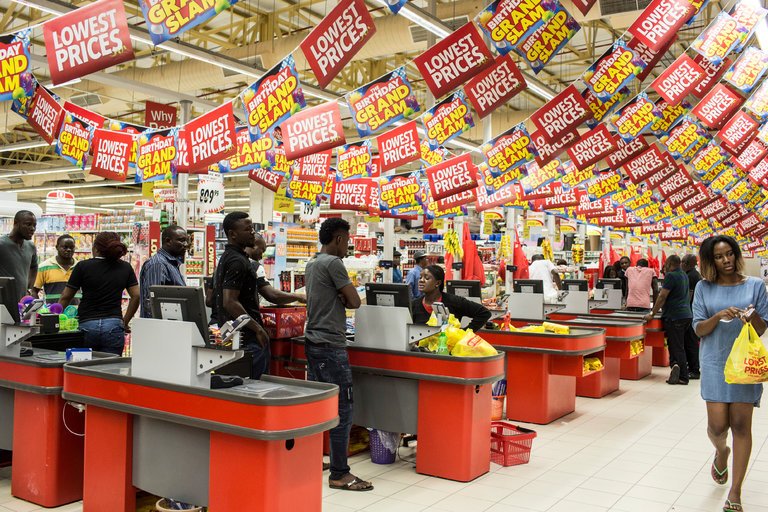Despite being the largest economy in Africa, Nigeria continues to fall far behind other African countries like Kenya and South Africa. This is a take-out from a new Nielsen report published on September 19, 2017, which aims at defining the African consuming class, and identifying its growth and potentials for brands entering the market. The report provides the size of the middle class in four African countries; Nigeria, Kenya, South Africa, and Ethiopia.
For a product to be successful in a market, there must be a significant section of the population not only willing to buy it, but also with the resources to buy. Contrary to previously held views, the middle class in Africa is large, and it is expanding. According to an African Development Bank research, a net 8 million people have moved out of poverty in the continent since 2005. The AfDB also says Africa is now the fastest growing and second largest mobile phone market in the world.
| Country | Total population (by World Bank) | Middle class population (by AfDB) |
| Nigeria | 186,000, 000 | 42,000,000 |
| South Africa | 55,910, 000 | 24,000,000 |
| Kenya | 48,460,000 | 21,000,000 |
| Ethiopia | 102,400,000 | 21,000,000 |
The AfDB defines the middle-class members in Africa as those who are able to spend between $2 and $20 in a day, putting the total figure at 420million, out of 1.3billion.
Recent studies like the new Nielsen survey reflects the potential of the African middle class. According to Ailsa Wingfield from Nielsen, “Africa is home to 54 countries, 1.3 billion people, the world’s second-fastest growing economy, millions of retail outlets and rapid urbanisation—more than 55 African cities have populations of more than 1 million people, 80% of which have mobile subscriptions. These cities are also seeing steep smartphone ownership growth rates”.
With the largest population in Africa, Nigeria has the largest Middle class in Sub-Saharan Africa, followed by South Africa. Yet in most of the major indices, Nigeria lags behind South Africa and even Kenya, when the population is considered. For instance, Nigeria has a total population of 186million and a middle-class population of 42million while Kenya has a total population of 48.46 million and a middle-class population of 21million.
Despite its very low middle class to population ratio, Nigeria is still a large and vibrant market for quality brands, though one has to understand the dynamics of the market to maximize its potentials. Nevertheless, as Africa continues to grow and its middle class grows with it, Nigeria has a lot of catching up to do. The country has to invest more in education and create more opportunities to lift more out of poverty and enlarge its middle class.
